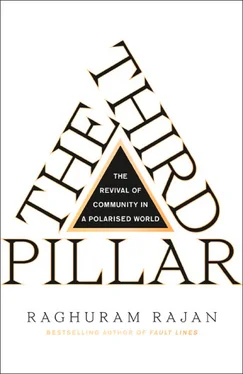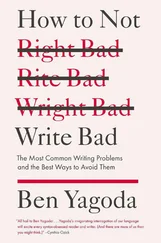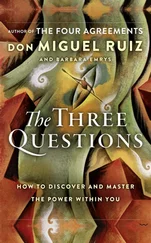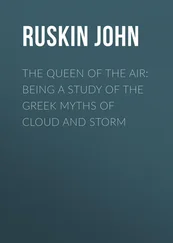Since different nation-states went through these developments in different ways, and my intent is to illustrate, not be exhaustive, I will focus on the path England followed, primarily because it was the first large nation-state with a constitutionally limited government. The process of stabilising governance in the English nation-state took the Crown over two hundred years, spanned the reigns of two houses – the Tudors and the Stuarts – and involved substantial amounts of chance. Even though England’s path to constitutionally limited government and freer markets was unplanned and idiosyncratic, through war it imposed competitive pressures on other European countries to change if they wanted to survive. Eventually, many reached the same endpoint, albeit in their own ways.
THE DECLINE OF THE MAGNATES
As we have seen, the new military technologies required scale. At the outset of nation building, the monarch was not personally much wealthier than the most powerful of the landed aristocracy. He needed to build his own power as well as reduce theirs. In the process of eliminating the threat of the high aristocracy, the English king unleashed market forces that would help create entities that would eventually curtail his own freedom of action. Interestingly, as the king lost the ability to act willfully and outside the law, as his identity was submerged in the broader apparatus of the state, the state’s access to financing from its citizens increased. It could now expand in ways, such as maintaining a large army, which would earlier have raised public apprehension about the monarch’s intentions. Somewhat paradoxically, the limited state became strong and improved its capabilities even while bolstering the confidence of the citizenry in the security of their property. Let us see how this happened. 1
Henry VII, the first Tudor monarch, was the last king of England to win his crown on the battlefield in 1485. There were others who had some right to the throne, so Henry’s claim to be monarch other than by ‘right of conquest’ was questionable, at best. From the outset, therefore, the Tudors had to dominate other aristocrats through sheer power. This was not a simple or quick task, and spanned the reigns of successive monarchs.
The monarch’s problem was complicated in two different ways. First, the landed aristocracy had built militias out of their armed servants, and could also summon their vassals and tenants to fight for them. Even as Henry VII passed a series of Acts asserting that the prime loyalty of every subject was first to the Crown and only then to his lord, feudal tradition militated otherwise. 2The monarch only had control over a small militia, and was otherwise reliant on conscription. This meant that in any emergency requiring a prompt response, such as an internal rebellion by one of the lords, he needed the help of the other lords to defeat it. Second, the king did not have a large bureaucracy to collect taxes. He depended on the high lords to collect and pass taxes on to the royal treasury. With the king so dependent on the aristocrats, he simply could not take them all on at the same time.
Time and infertility were on the king’s side. He had no need to create powerful new aristocrats, and indeed no dukes were created by the Tudors. 3Furthermore, because some lords did not have male children, which was not an infrequent occurrence, existing houses came to an end. Through such means, Henry VII doubled his revenues from Crown lands. 4Individual rebellious lords could also be picked off, convicted of treason, and executed, as was the duke of Buckingham by Henry’s son, Henry VIII, and their lands seized by the Crown. Nevertheless, what really clipped the wings of the landed aristocracy was more indirect and perhaps unintended – the dissolution of monasteries and the great price inflation of the sixteenth century.
THE DISSOLUTION OF THE MONASTERIES AND THE RISE OF THE GENTRY
The Tudors were hungry for land, and looked for easy targets. After Henry VIII broke with the Pope over his marriage to Anne Boleyn, he turned his attention to the Church’s wealth in its various monasteries, which had grown substantially since the Gregorian reforms. Monastery property had two attractions. First, it was unprotected by armed men, unlike the land of the magnates. Many monasteries had also grown complacent and neglected their duties toward the needy. As a result, they enjoyed only modest public support. Second, and perhaps more important, monastery land was poorly managed, which attracted the attention of the capable, who felt they could do a better job using the latest methods of agricultural management. 5So when Henry VIII seized monastery property, giving abbots and abbesses the choice between being accused of treason, convicted, and put to death cruelly (they needed to be convicted because only the property of traitors went legally to the Crown), or ceding property ‘voluntarily’ to the Crown, most made the obvious choice, and few among the public protested.
The seized property was soon sold, as the king needed funds to fight wars. Those who bought the land were primarily local moderately wealthy land owners – the local gentry. These were typically minor nobility, who did not have the vast land holdings the aristocracy had, but owned more land than well-to-do peasants. The landed high aristocracy were only a few dozen, while the gentry numbered in the thousands. The gentry had made their money managing their own properties well. They could bring their expertise to the new properties, especially because they knew local conditions and were closer to the land than the landed magnates. Since land ownership was the route to social status in those times, successful wealthy town-dwellers such as merchants and lawyers also bought land so that they could rise to the status of country gentlemen.
These men improved the management of the land they bought; including bringing unused land into cultivation; ending unproductive traditional techniques such as leaving one out of two fields fallow instead of one out of three; and appropriating customary-use common areas by enclosing them, and shifting them into more lucrative sheep rearing. Rather than continue with the feudal practice of demanding unpaid labour from tenants, which was anyway grudgingly given, these ‘new’ men instead hired labour directly for commercial wages. They raised rents on existing tenants commensurate with the commutation of labour obligations and the increased incomes from the more productive land. Not all were successful in making a go of land management, but the unsuccessful sold out to others who were more expert. At any rate, land management improved substantially, increasing agricultural output. Some economic historians argue that England’s prosperity in Elizabethan times was in substantial part due to higher national income growth resulting from the seized lands. 6
Importantly, the successful country gentlemen, both old and new, went on to acquire more land. Some of the richer gentry came to own as much as the poorer aristocrats. Furthermore, because many of the high lords were not particularly good managers – after all, they and their ancestors had established their prowess on the battlefield, not in estate management – the incomes of the richer gentry far exceeded that of the poorer aristocracy. For crops that had a national market, the more efficient cheaper production from the gentry lowered prices and thus aristocratic incomes. The old guard was at risk of being blown away by the gales of competition.
The aristocracy, who no longer could distinguish themselves easily from lesser mortals based on land ownership or income, found new grounds for differentiation. What distinguished them from the nouveau-riche Calvinist gentry was their lavish entertainment and the liberal hospitality they showered on guests who passed their social threshold, their free-spending enjoyment of fashion, art, and architecture, and their sympathetic treatment of unproductive customary tenants paying low rents. These were exactly the wrong elements to distinguish themselves by as prices started rising.
Читать дальше












